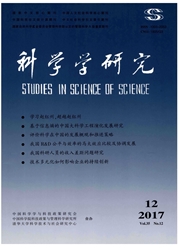

 中文摘要:
中文摘要:
基于LRICES模型,将研发投资引发的技术进步内生化到模型中,在假设各国未来的研发投资处于较保守增长速度的前提下,分析研发投资对全球气候保护政策的影响。研究发现,在内生化研发投资技术进步机制的作用下,至2100年,全球升温2.32℃,全球及各国的碳排放趋势均呈现先上升后下降再略微反弹的"倒S"型,全球的碳排放高峰为2032年,中国、美国、日本、欧盟、前苏联、世界其他地区的碳排放高峰分别出现在2034年、2020年、2034年、2022年、2031年、2036年。虽然发达国家比发展中国家较早达到了排放高峰,但2050年发达国家的人均碳排放量仍远高于发展中国家,急需落实减排。在研发投资的作用下,文章提出了一个全球减排方案:发达国家碳排放量比1990年减少80%,前苏联地区碳排放量比1990年减少50%,中国和其他地区从2025年开始总量减排,至2050年碳排放量控制在2005年水平。该减排方案不仅使至2100年全球升温控制在1.92℃,而且在减排经济成本支出、效用损失等方面充分体现了"共同但有差别的责任"原则,有利于促进发展中国家消除贫困和经济增长。
 英文摘要:
英文摘要:
In order to modeling the influence of RD expenditures on climate change,endogenous technological change induced by RD expenditures is integrated into the LRICES model.With the assumption of RD expenditures growth,the global temperature rise by 2100 is about 2.32℃ with BAU(business-as-usual),and the trajectories of carbon emissions in China,US,Japan,EU,FSU and ROW are predicted respectively,which are "S-shaped" with emission peak and emission rebound.The emission peak year in China,US,Japan,EU,FSU and ROW are 2034,2020,2034,2022,2031 and 2036 respectively.It can be found emissions in developed countries will peak earlier than developing countries,but the emission per capita in developed countries by 2050 is still much higher than other regions.A global emission reduction scheme is necessary.Based on the policy modeling in this paper,we propose that developed countries and FSU cut emission by 80% and 50% to 1990 level by 2050,while China and ROW start emission cutting by 2025 and control emissions to 2005 level by 2050.This scheme not only can control the global temperature rise by 2100 to be 1.92℃,but also show the principle of "common but differentiated responsibilities" when take into account the economic cost and utility loss.
 同期刊论文项目
同期刊论文项目
 同项目期刊论文
同项目期刊论文
 期刊信息
期刊信息
